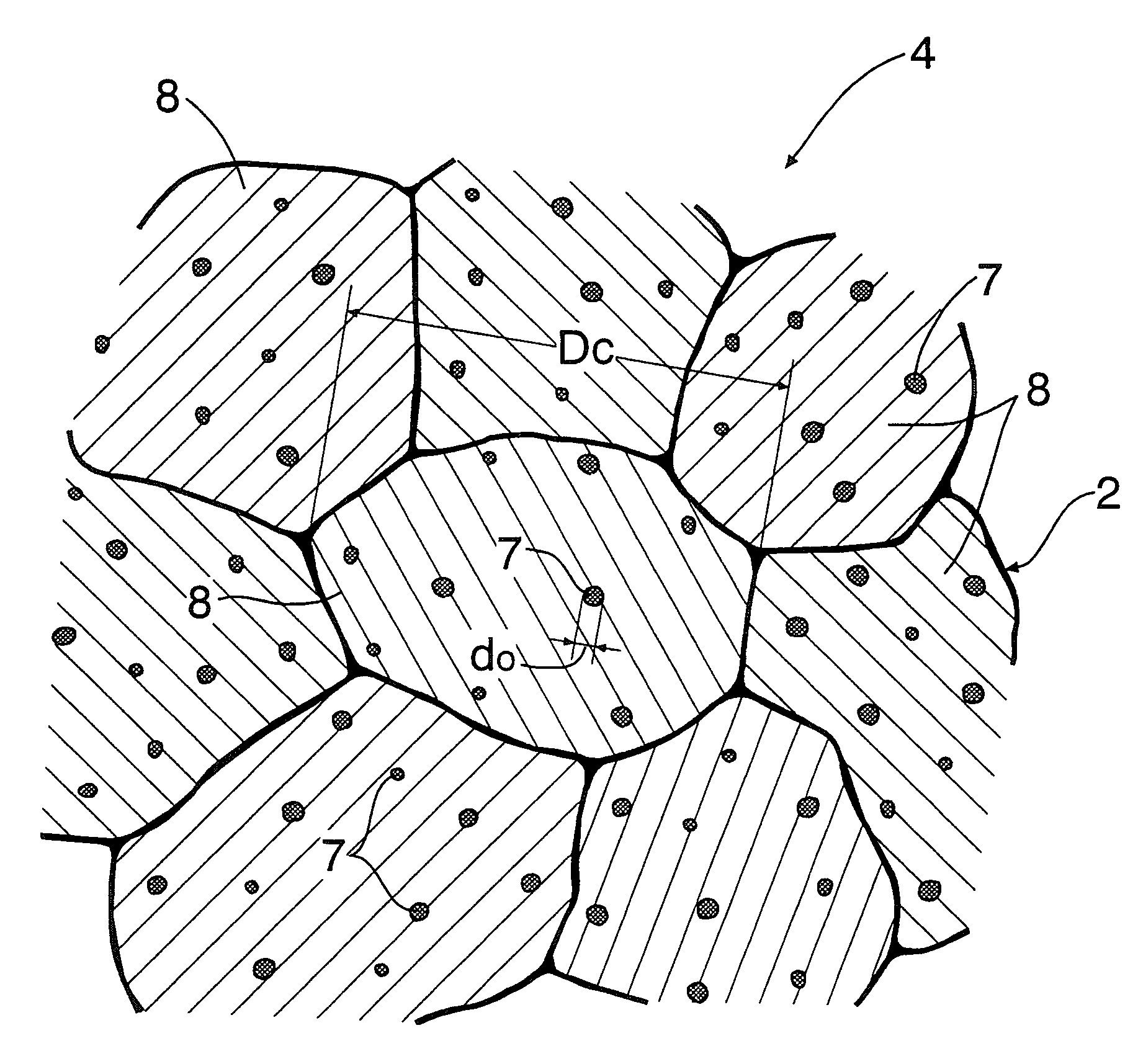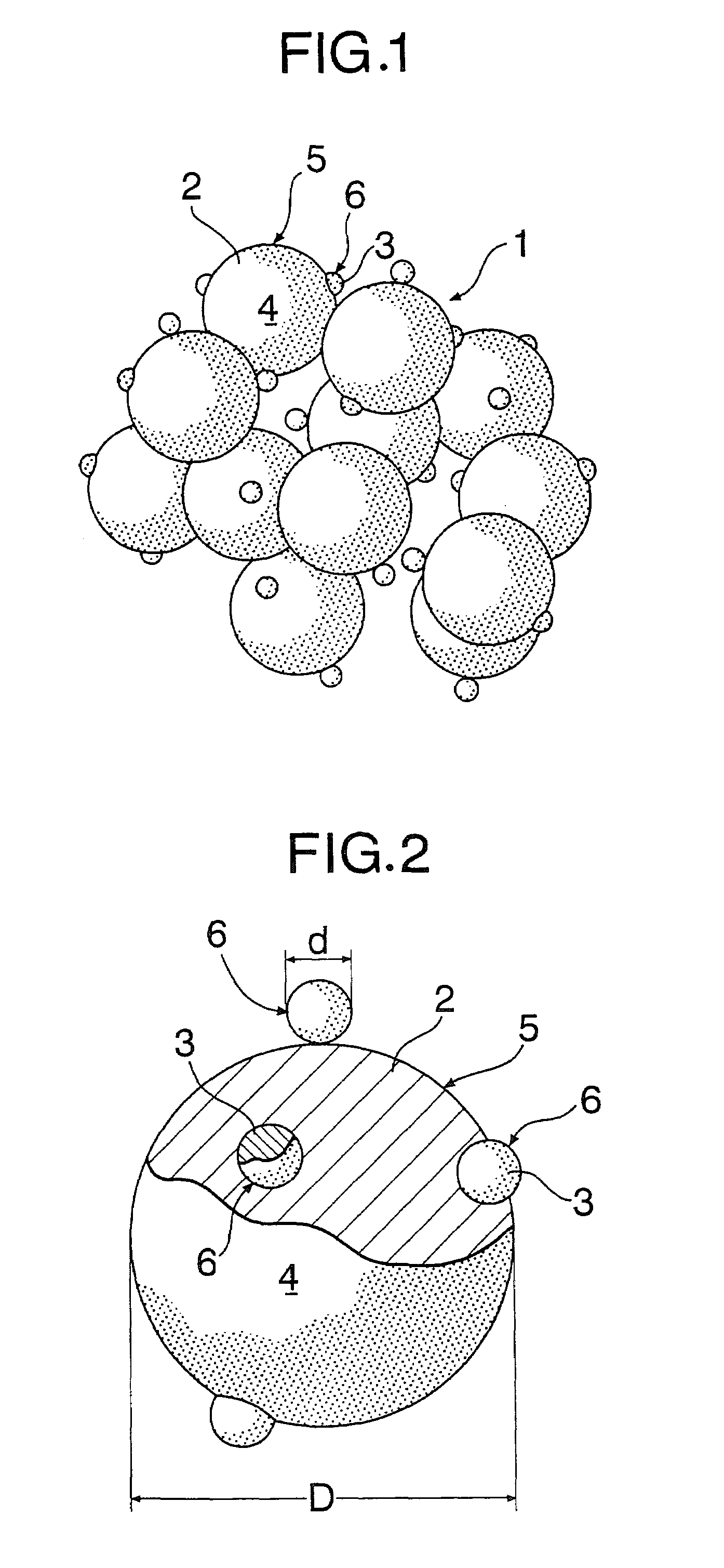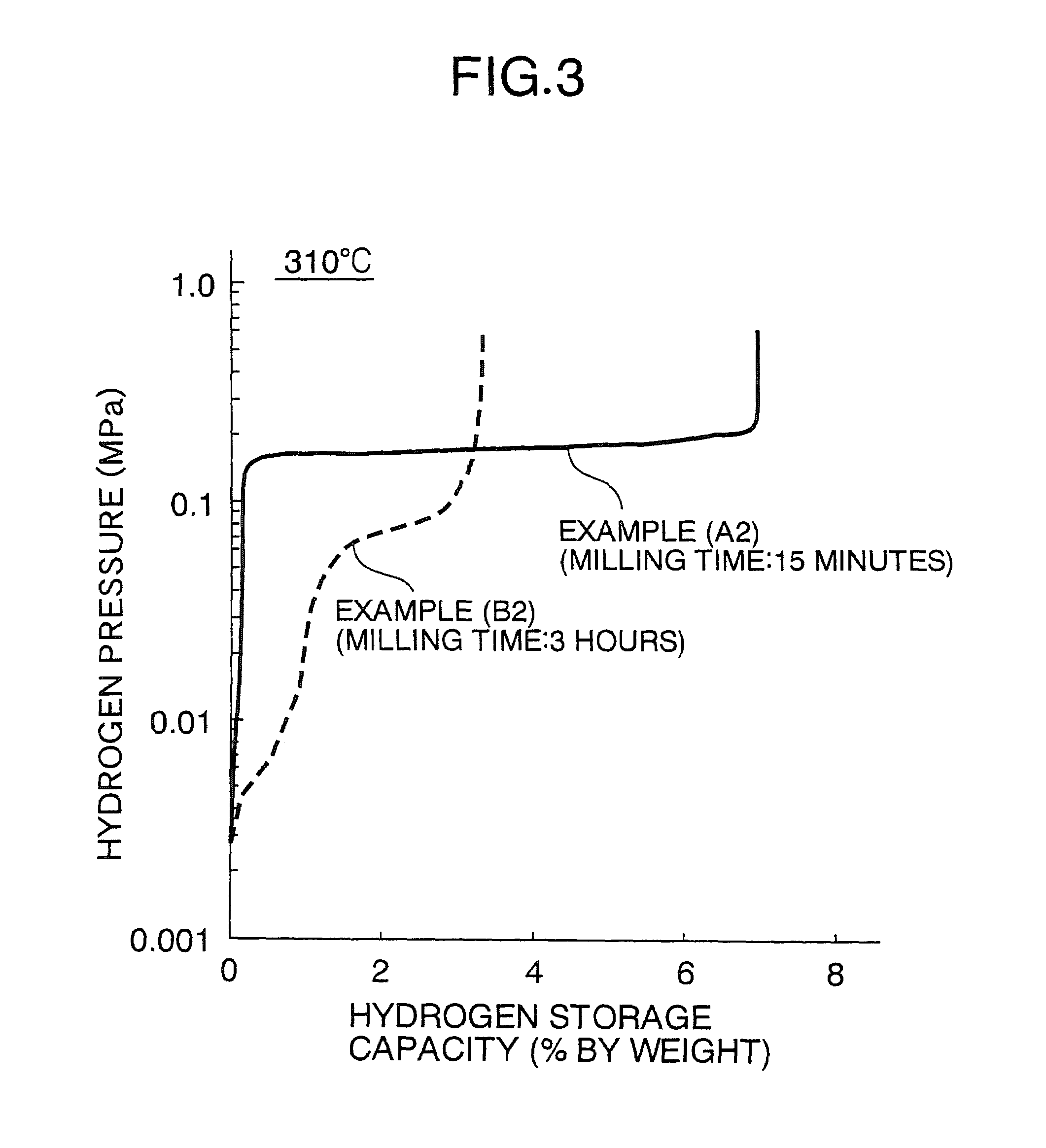Hydrogen absorbing alloy powder and hydrogen storing tank for mounting in a vehicle
a technology of hydrogen storage tank and hydrogen storing tank, which is applied in the direction of transportation and packaging, inorganic chemistry, chemistry apparatus and processes, etc., can solve the problems of inefficient production of energy and longer milling time, and achieve the effect of shortened milling tim
- Summary
- Abstract
- Description
- Claims
- Application Information
AI Technical Summary
Benefits of technology
Problems solved by technology
Method used
Image
Examples
first embodiment
[0035]Referring to FIGS. 1 and 2, a hydrogen absorbing alloy powder 1 is an aggregate of alloy particles 4 each comprising a metal matrix 2 and added components 3.
[0036]To produce the hydrogen absorbing alloy powder 1, a process is employed, in which one of a mechanical alloying and a mechanical grinding is carried out using an aggregate of metal matrix particles 5 (a metal matrix powder) and an aggregate of added-component particles 6 (an added-component powder).
[0037]In this case, the relationship between the particle size D of the metal matrix particles 5 and the particle size d of the added-component particles 6 is set at d≦D / 6. For example, the particle size of the metal matrix particles 5 is D≧3 μm, preferably, D≧5 μm, and the added-component particles 6 have the particle size d≦500 nm. The relationship between the particle sizes D and d is preferably in a range of D / 1000≦d≦D / 20, and the amount L of added-component particles added in a range of 0.1% by atom≦L≦5.0% by atom, pre...
example 3 of
PRODUCTION
[0052]An aggregate of Mg particles (as metal matrix particles) having a purity of 99.9% and a particle size D of 180 μm, and an aggregate of Ni particles and an aggregate of Fe particles (as added-component particles) each having a purity of 99.9% and a particle size d of 300 nm were weighed to provide an alloy composition of Mg99.5Ni0.33Fe0.17 (unit of each of numerical values was % by atom), thereby producing a total of 1,100 g of a mixture powder. This mixture powder was placed into a container (made of JIS SUS316) having a volume of 24.1 L of a ball mill together with 5,500 balls (made of JIS SUS316) having a diameter of 10 mm, and subjected to ball milling with the inside of the container maintained at a hydrogen gas atmosphere of 1.0 MPa conditions of a container-rotational speed of 60 rpm and milling time t of 60 minutes. In this case, an acceleration 1 G equivalent to a gravity acceleration G was generated in the container. After the ball milling, the hydrogen abso...
second embodiment
[0054]Referring to FIGS. 8 and 9, a hydrogen absorbing alloy powder1 is an aggregate of alloy particles 4. Each of the alloy particles 4 includes an Mg matrix 2 and a plurality of ultra-fine particles 7 dispersed in the Mg matrix 2. The Mg matrix 2 has a plurality of Mg crystals having a grain size DC in a range of 1.0 μm≦DC≦500 μm, and the ultra-fine particles have a particle size d0 in a range of 10 nm≦d0≦500 nm, preferably, d0≧100 nm. In this case, the grain size DC of the Mg crystals 5 and the particle size d0 of the ultra-fine particles 7 are defined to be lengths of longest portions of the crystals 5 and the particles 7 respectively in a microphotograph. The same definition is applied to cases described hereinafter. The Mg matrix 2 encompasses an Mg matrix including one or two or more Mg crystals which do not have the above-described grain size DC, in addition to an Mg matrix comprising only Mg crystals having the above-described grain size DC. The Mg crystals 8 which have the...
PUM
| Property | Measurement | Unit |
|---|---|---|
| particle size d0 | aaaaa | aaaaa |
| grain size DC | aaaaa | aaaaa |
| grain size DC | aaaaa | aaaaa |
Abstract
Description
Claims
Application Information
 Login to View More
Login to View More - R&D
- Intellectual Property
- Life Sciences
- Materials
- Tech Scout
- Unparalleled Data Quality
- Higher Quality Content
- 60% Fewer Hallucinations
Browse by: Latest US Patents, China's latest patents, Technical Efficacy Thesaurus, Application Domain, Technology Topic, Popular Technical Reports.
© 2025 PatSnap. All rights reserved.Legal|Privacy policy|Modern Slavery Act Transparency Statement|Sitemap|About US| Contact US: help@patsnap.com



